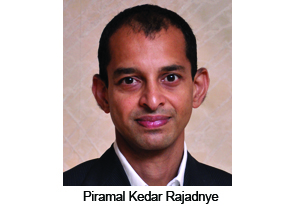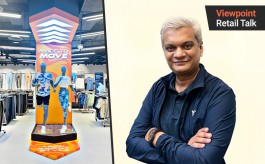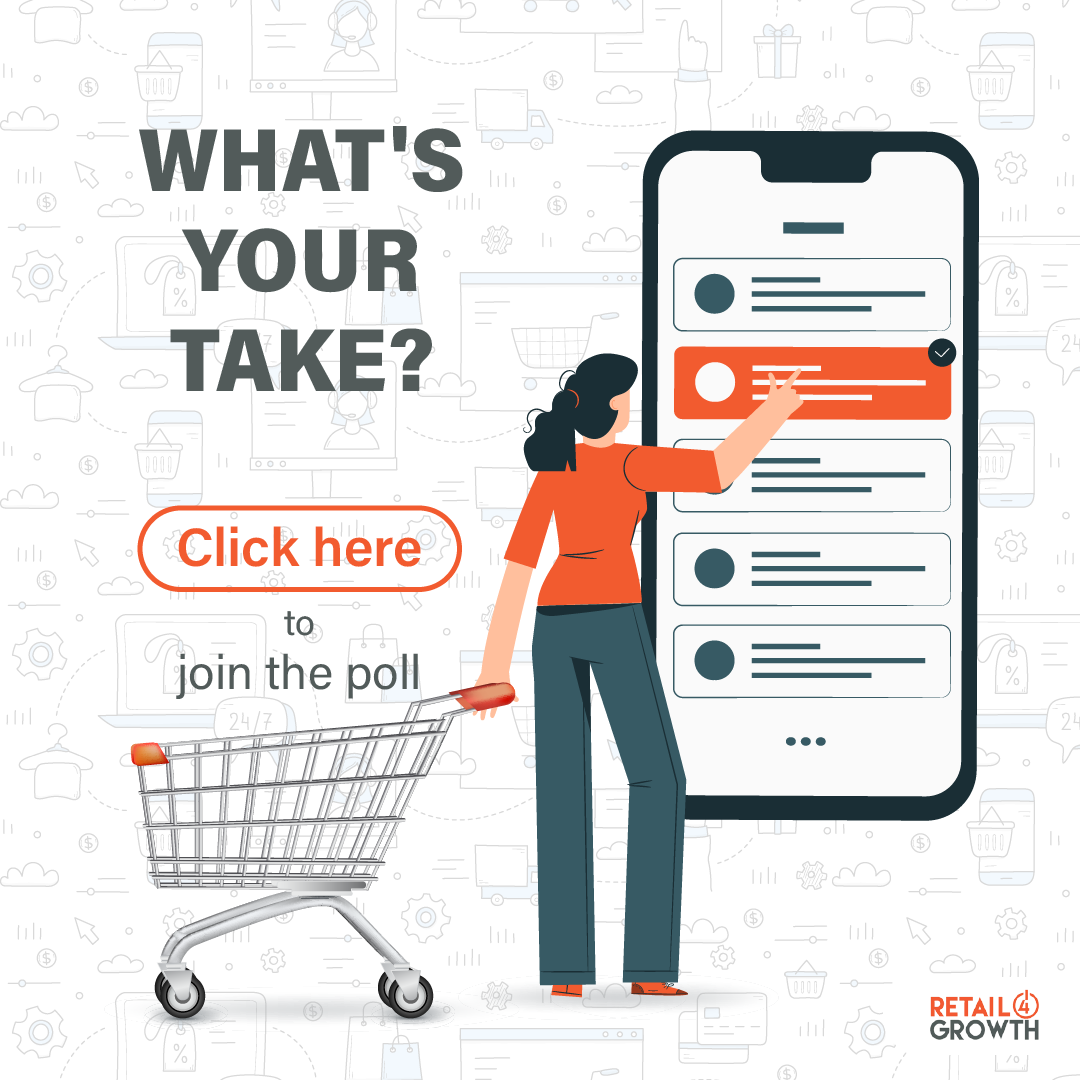Home » Viewpoints » 'Retail diversity is the biggest challenge'
'Retail diversity is the biggest challenge'
By Fairy Dharawat | July 24, 2013
Kedar Rajadnye, President and COO -- Consumer Products Division, Piramal Enterprises, talks about the pharma brand's approach to retail.
Could you tell us about the new retail formats you are looking at and why?
We operate in a consumer product industry which includes products that have a pharmaceutical and scientific edge to them, while having a front end where customers make their own decisions. The bulk of our products therefore get sold usually from three formats:
1) Chemist: The chemist shop is a predominantly large sector where our products like Saridone, the i range including i sure, i pill etc, and Lacto Calamine and Super Active etc go through the first channel.
2) We also sell lots of cosmetics from General Store because products like Lacto Calamine communicate and reach out to the women consumers and with regard to them this outlet channel works for us.
3) The third one is the modern trade channel and we have realized that modern trade plays a key role for us and for our products as consumers can actually go and see the outlets, touch and feel the products and then make their own self- care decisions.
4) Recently we have a fourth one, the kids' store. We have a kids' perfume so we are actually looking at kids' stores and outlets like Crossword and Landmark and outlets where kids and families can spend time.
What is the turnover contribution of these four divisions?
 Turnover wise, roughly 45 to 50% happens through chemists, of which around 25-26% comes from cosmetics and the general store and modern trade account for 8-9%. The kids business is very small right now as we just started it, so it will stand at around 4-5%.
Turnover wise, roughly 45 to 50% happens through chemists, of which around 25-26% comes from cosmetics and the general store and modern trade account for 8-9%. The kids business is very small right now as we just started it, so it will stand at around 4-5%.
What is your investment in retail like?
When you look at retail, there are two types of investments:
1) Roughly 35-40% of our promo spends go to below-the-line and this basically comprises visibility; that is visibility we get at the outlet level, which could be a paid visibility or it could be shopper engagement and visibility provided at the outlet level.
2) We try to use units which dispense product and information.
3) We are also looking towards having beauty advisers in our outlets.
Can you tell us about your visibility initiatives at retail?
We have an interesting product range with many products in the self-care category where most of the category consumers have their own brand preferences - for example when they have a headache they will approach two to three brands. In most of these cases, the consumers go to the chemist channel and decide based on the visibility of that product there. Therefore to a large extent, purchase decision is carried out in the point of purchase. Therefore a large percentage (45-50%) of our total spend goes into influencing and reaching out to consumers at the point of sale. Also, most of our products have a scientific background and we leverage the point of purchase to reach out with educational materials. We give out leaflets and CDs where consumers can see it at the outlet level, gain knowledge on the product and then decide to purchase the product.
Could you share some consumer insights in this segment?
If you look at it from the POP perspective, we spend quite a bit to connect with our consumer and understand them. In the last four to five years, the retail space and landscape in India has evolved and changed quite dramatically. Consumers have got more choices. With modern trade coming in, many of the retailers have realized that if you allow consumers into the outlet you can actually have a partnership with them wherein they can decide on their own products. Our own list in this category has gone up from 4-9% to 8-9%.
The moment you let consumers touch and feel products, you are also encouraging a scientific dialogue where the consumer looks at the science, looks at the product and then takes a decision. And that's what we are doing with the packaging. If you see, we are bringing the science behind the product into our packaging and label. Consumers and retail entities are evolving and we realize we have to be in sync with that.
As an organization we also spend quite a bit on understanding consumers and connecting with them. Once a month our entire team, which consist of 150 employees in our HO, travel to understand consumers every month. We travel to multiple locations in India, meet consumers every month and we also see the retail outlets and once a quarter we spend a day at a retail outlet and observe the consumer behavior upfront. So we get different perspectives like the band preferences of consumers in each category, categories where the retailer has to play a role, the information exchange etc.
What kind of innovations do you observe in retail?
We have noticed that multiple levels of innovation have happened - more and more retail chains are becoming increasingly self service. And, even if there is no self service, the retailer is taking an active part in encouraging a conversation and having a dialog with the consumer and the shopper in the last three to four years. The retail space is getting more and more premium and we are realizing that the space we could have easily got for free comes with a price today.
Also, many companies are realizing that packaging plays a major role in communicating the interplay which happens between the consumer and the product. And that has become much more appealing as a typical chemist shop will have anywhere between 15000-20000 SKUs. Visibility wise, there are 800-900 products. So how can your product shout out from competition? This is where packaging plays a predominant role. We have seen a significant change in terms of the colors, the textures and the kind of options which are available today where multiple programs are designed to reach out to consumers.
What are your primary challenges in the retail context?
The diversity is a challenge we face. Unlike in developed markets, where MT contributes 45-50% or even more than that to total sales, in the Indian context, the key moment up-close is where the transaction happens. The challenge is to handle the diversity as there are multiple and large number of outlets in India. So how do we ensure that we have standardization in terms of merchandising and visibility across? If you look at Mumbai, there are 35 outlets, so we need to ensure that the visibility and standardization is there across the market with touch being the key role. And I think this challenge of sheer diversity and numbers through various channels and getting consistency is key for retailers and us.
We operate in a consumer product industry which includes products that have a pharmaceutical and scientific edge to them, while having a front end where customers make their own decisions. The bulk of our products therefore get sold usually from three formats:
1) Chemist: The chemist shop is a predominantly large sector where our products like Saridone, the i range including i sure, i pill etc, and Lacto Calamine and Super Active etc go through the first channel.
2) We also sell lots of cosmetics from General Store because products like Lacto Calamine communicate and reach out to the women consumers and with regard to them this outlet channel works for us.
3) The third one is the modern trade channel and we have realized that modern trade plays a key role for us and for our products as consumers can actually go and see the outlets, touch and feel the products and then make their own self- care decisions.
4) Recently we have a fourth one, the kids' store. We have a kids' perfume so we are actually looking at kids' stores and outlets like Crossword and Landmark and outlets where kids and families can spend time.
What is the turnover contribution of these four divisions?
 Turnover wise, roughly 45 to 50% happens through chemists, of which around 25-26% comes from cosmetics and the general store and modern trade account for 8-9%. The kids business is very small right now as we just started it, so it will stand at around 4-5%.
Turnover wise, roughly 45 to 50% happens through chemists, of which around 25-26% comes from cosmetics and the general store and modern trade account for 8-9%. The kids business is very small right now as we just started it, so it will stand at around 4-5%.What is your investment in retail like?
When you look at retail, there are two types of investments:
1) Roughly 35-40% of our promo spends go to below-the-line and this basically comprises visibility; that is visibility we get at the outlet level, which could be a paid visibility or it could be shopper engagement and visibility provided at the outlet level.
2) We try to use units which dispense product and information.
3) We are also looking towards having beauty advisers in our outlets.
Can you tell us about your visibility initiatives at retail?
We have an interesting product range with many products in the self-care category where most of the category consumers have their own brand preferences - for example when they have a headache they will approach two to three brands. In most of these cases, the consumers go to the chemist channel and decide based on the visibility of that product there. Therefore to a large extent, purchase decision is carried out in the point of purchase. Therefore a large percentage (45-50%) of our total spend goes into influencing and reaching out to consumers at the point of sale. Also, most of our products have a scientific background and we leverage the point of purchase to reach out with educational materials. We give out leaflets and CDs where consumers can see it at the outlet level, gain knowledge on the product and then decide to purchase the product.
Could you share some consumer insights in this segment?
If you look at it from the POP perspective, we spend quite a bit to connect with our consumer and understand them. In the last four to five years, the retail space and landscape in India has evolved and changed quite dramatically. Consumers have got more choices. With modern trade coming in, many of the retailers have realized that if you allow consumers into the outlet you can actually have a partnership with them wherein they can decide on their own products. Our own list in this category has gone up from 4-9% to 8-9%.
The moment you let consumers touch and feel products, you are also encouraging a scientific dialogue where the consumer looks at the science, looks at the product and then takes a decision. And that's what we are doing with the packaging. If you see, we are bringing the science behind the product into our packaging and label. Consumers and retail entities are evolving and we realize we have to be in sync with that.
As an organization we also spend quite a bit on understanding consumers and connecting with them. Once a month our entire team, which consist of 150 employees in our HO, travel to understand consumers every month. We travel to multiple locations in India, meet consumers every month and we also see the retail outlets and once a quarter we spend a day at a retail outlet and observe the consumer behavior upfront. So we get different perspectives like the band preferences of consumers in each category, categories where the retailer has to play a role, the information exchange etc.
What kind of innovations do you observe in retail?
We have noticed that multiple levels of innovation have happened - more and more retail chains are becoming increasingly self service. And, even if there is no self service, the retailer is taking an active part in encouraging a conversation and having a dialog with the consumer and the shopper in the last three to four years. The retail space is getting more and more premium and we are realizing that the space we could have easily got for free comes with a price today.
Also, many companies are realizing that packaging plays a major role in communicating the interplay which happens between the consumer and the product. And that has become much more appealing as a typical chemist shop will have anywhere between 15000-20000 SKUs. Visibility wise, there are 800-900 products. So how can your product shout out from competition? This is where packaging plays a predominant role. We have seen a significant change in terms of the colors, the textures and the kind of options which are available today where multiple programs are designed to reach out to consumers.
What are your primary challenges in the retail context?
The diversity is a challenge we face. Unlike in developed markets, where MT contributes 45-50% or even more than that to total sales, in the Indian context, the key moment up-close is where the transaction happens. The challenge is to handle the diversity as there are multiple and large number of outlets in India. So how do we ensure that we have standardization in terms of merchandising and visibility across? If you look at Mumbai, there are 35 outlets, so we need to ensure that the visibility and standardization is there across the market with touch being the key role. And I think this challenge of sheer diversity and numbers through various channels and getting consistency is key for retailers and us.
Advertisement
Related Viewpoints
Advertisement









Comments